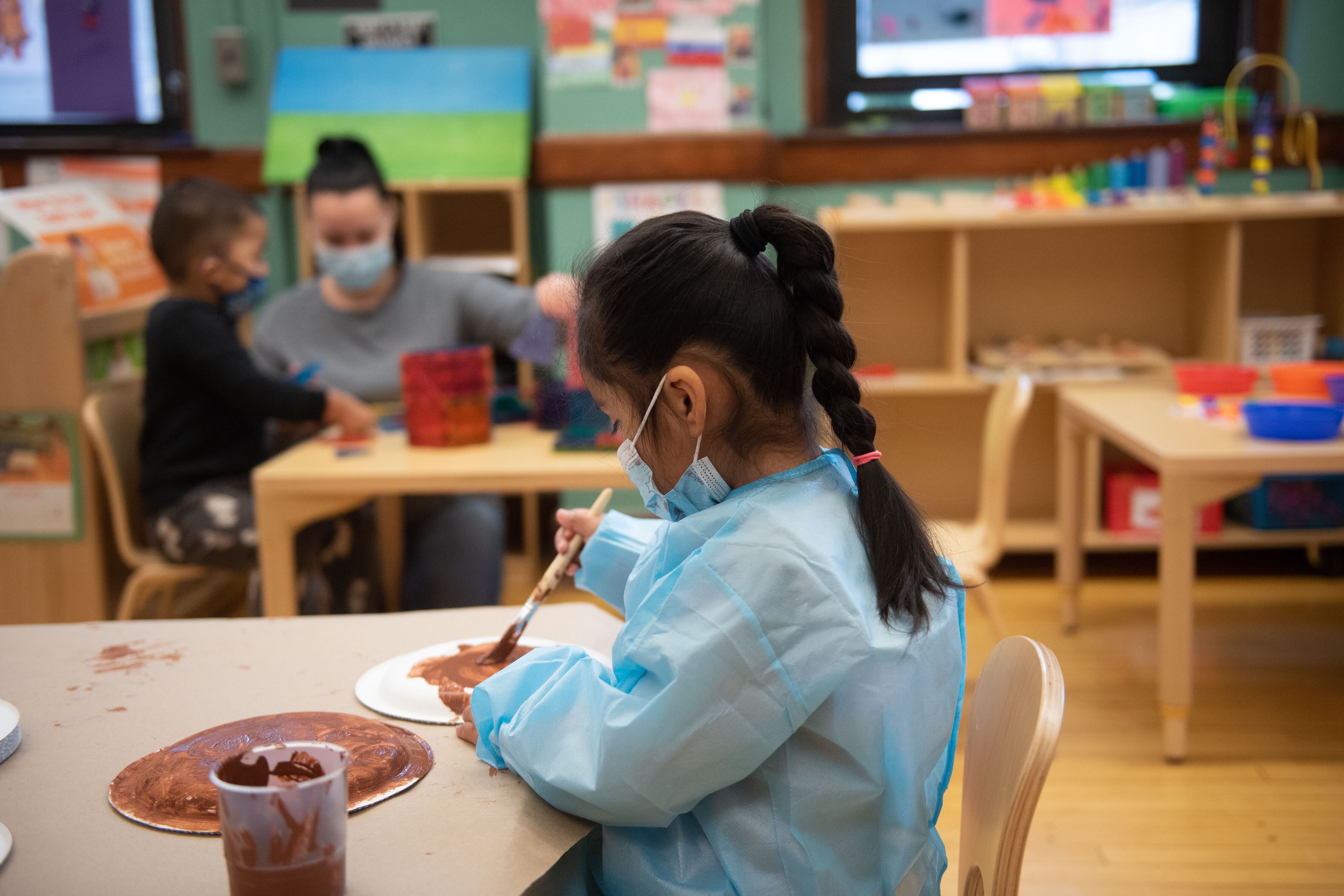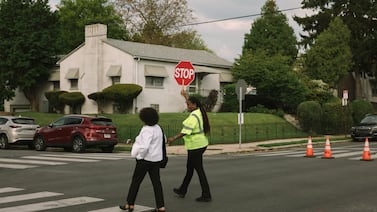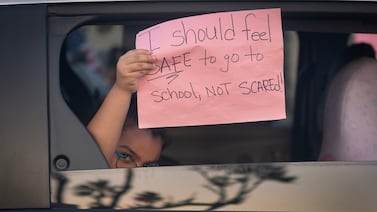This story was published in partnership between THE CITY and The Fuller Project, and it originally appeared in THE CITY on Jan. 7, 2022.
Families with children in city pre-K and 3K programs are grappling with lengthy quarantines and lack of access to testing following exposure to COVID-19 during the Omicron surge — without the “test-to-stay” program that’s letting K-12 students remain in the classroom with a negative result.
It’s a “crisis moment,” said MC Forelle, 35, a parent of two small children in Windsor Terrace, Brooklyn.
On Tuesday, Forelle learned her 3-year-old son had been exposed to COVID-19 in his classroom.
Under the Department of Education’s stated quarantine requirements, she is required to keep him home from the Bishop Ford pre-K center in Greenwood Heights for 10 days.
Forelle also decided to keep her other child, who’s 5 months old, home from day care as a precaution. That leaves the Cornell Tech researcher back in the position of trying to juggle full-time work from home and child care alongside her partner, like they did earlier in the pandemic.
“I do know that this is going to have some really long term effects for my career,” she said. “I’m not going to have much to show for the last year, not even to speak of the next few weeks. And I know this is going to have a big impact on me long term.”
Forelle’s frustrations largely lie with the DOE’s testing and quarantine program for early education. This week, the DOE began implementing a “test-to-stay” program for K-12 students, which allows children who’ve been exposed to COVID but test negative to return to school after five days.
Under test-to-stay, public school students receive two free take-home antigen tests, which their parents are asked to administer on the day the child receives the test and again on the fifth day after exposure.
But children in early childhood education programs are still required to quarantine for the full 10 days if they’ve been exposed to the virus — even if they test negative. And as of this week, families in DOE early education programs have not been provided with testing kits.
“The fact that the DOE has decided not to send at-home testing kits with Pre-K and 3K families is f–king wild to me,” said Forelle. “These are the only students that the DOE has that are not eligible to be vaccinated, and yet, they’re the only students who are also not eligible to take home at-home tests.”
Attendance at Bishop Ford was 68% on Thursday, the Department of Education’s website shows.
On Friday, state health officials released figures showing nearly 400 New York City children hospitalized with a positive COVID test at some point in the week beginning Dec. 26, many of them because of COVID-related symptoms. Among them, 55% are under the age of 5, and 91% of hospitalized children ages 5 to 11 were unvaccinated, according to the state Department of Health. Children under 5 have not yet been approved by federal authorities for any vaccine against COVID-19.
Meghan Groome, 44, a Park Slope, Brooklyn, resident who also has a 3-year-old enrolled at Bishop Ford, says she doesn’t understand why the “test-to-stay” policy would not extend to children in early education programs whose parents are especially in need of child care.
“As a science person, I’m baffled by that policy,” said Groome, who works at the New York Academy of Sciences. “As a mom, I just broke when I read that policy. Like, why do you hate toddlers and their families?”
The week before her school’s holiday break, Groome’s daughter had an exposure and was required to quarantine. Groome is the only earner in her household, and says that the quarantine requirements greatly impacted her ability to get work done because she had to provide round-the-clock child care all on her own to protect others from exposure.
Now, she worries what will happen if her daughter has to quarantine again for a 10-day period.
“This age group is not eligible for vaccination…and then also not eligible for the things that we know keep them safe and in school, which is the test-to-stay policy,” she said. “It feels like a really pointed policy at the working parents who have small children.”
Tests for the Symptomatic
Children in K-12 programs deemed exposed to the virus at school began to receive tests as of this week, and the DOE says that they will begin delivering testing kits to early education programs starting next week.
However, unlike K-12 students, early education students will receive at-home tests only if they are symptomatic, according to DOE spokesperson Sarah Casasnovas. Early education students who’ve been exposed to COVID-19 but are not currently symptomatic will not receive tests. But in any case, there will be no way to shorten the length of the 10-day home quarantine if they have an exposure.
“Nothing is more important than the health and safety of our school communities,” wrote Casasnovas in a statement to the Fuller Project and THE CITY. “We continue to maintain a hyper-vigilant quarantine policy for all early childhood students to ensure the health and safety of our youngest learners who are not yet eligible for the vaccine.
Some families have begun organizing efforts for parent associations to pay for expensive private testers to come to their schools to give them peace of mind about their children’s safety and the safety of other children and adults in their household. While this wouldn’t impact the 10-day quarantine requirements, it might allow families more flexibility when it comes to working in person or making child care arrangements.
Relatively privileged families, with the ability to work from home, have tended to be more proactive in reaching out to journalists to bring attention to parents’ plight.
State Senator Jessica Ramos (D-Queens), worries about the possibility that families in wealthier parts of the city could have access to testing resources not available to those in lower-income communities. “All of these things should be easily and readily available to everybody,” said Ramos, who has lobbied for the state to send every household free at-home tests in the mail.
Nicole Sokolowski, 36, in Forest Hills, Queens, made the decision when school resumed after the New Year to keep her 3-year-old home from his 3K program to avoid him picking up the virus.
Her decision proved prescient when a COVID exposure was reported in the classroom while he was home.
“We don’t have really a clear endgame in sight of when we would send him back,” said Sokolowski, who has felt her work take a hit because of having to provide full-time child care alongside her husband even though she works from home.
Access to child care has continued to be a major impediment to mothers attempting to stay or re-enter the workforce in New York City. Census Bureau data analyzed by the nonprofit Citizens’ Committee for Children showed that 41% of 25 to 54-year-old women in New York City with children in New York City were not working at the end of the last school year — when school for most children was fully or partially remote — compared to just 24% of men.
The majority of these women identified lack of access to child care as their primary barrier to participating in the workforce.
Sokolowski says she wishes the city had made more effort to ensure that parents with children in early education programs received tests this week and were given the same testing opportunities as older children. “I would have felt more supported if it was there,” she says.






